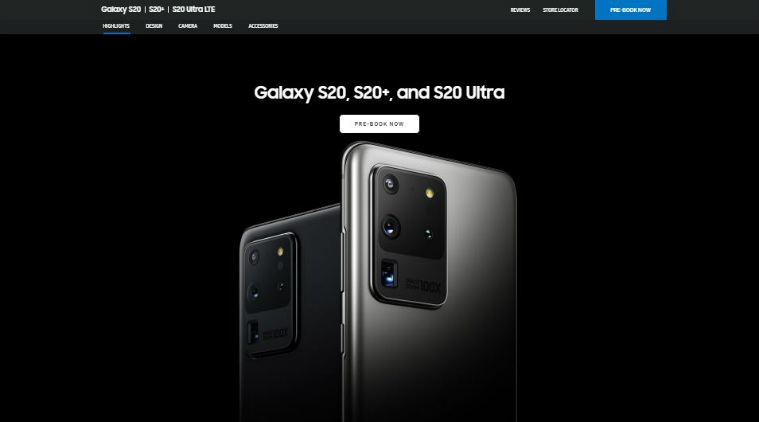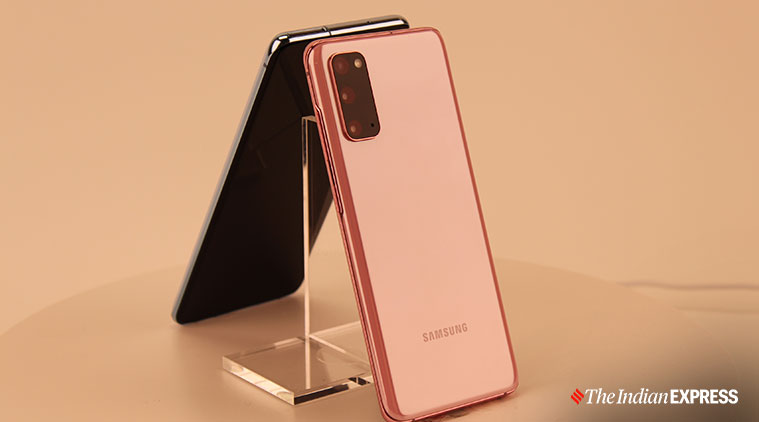 The biggest reason why 5G support is missing from the Indian versions of the Galaxy S20 is the lack of clarity on 5G deployment. (Image credit: Sneha Saha/Indian Express)
The biggest reason why 5G support is missing from the Indian versions of the Galaxy S20 is the lack of clarity on 5G deployment. (Image credit: Sneha Saha/Indian Express)
Ever since Samsung announced the price and pre-order details for the Galaxy S20 series in India, I have been bombarded with all sorts of questions: some obvious and some unexpected. This happens every time Samsung or Apple launches new smartphones. But this year is a bit different.
Okay… before I come to the confusing part, let me tell you that the Galaxy S20 series is Samsung’s complete lineup of smartphones. They come with new processors, new camera sensors, bigger battery life, and 120Hz displays. So far, so good.
The one feature conspicuously missing from Samsung’s shiny new smartphones in India is 5G. So, Samsung will be selling non-5G versions of the Galaxy S20 in India. But that is not surprising at all. Here’s why.
The biggest reason why 5G support is missing from the Indian versions of the Galaxy S20 is the lack of clarity on 5G deployment. Unlike the US market, there is confusion in India’s telecom sector. The situation is such that India is yet to start pre-commercial trials of 5G networks.
The other issue is that the government has not even begun auctioning 5G spectrum, which means we are a year and a half away from actual 5G services going live in India. Industry experts say the pricing of the spectrum is one of the main reasons behind the delay of commercial availability of 5G. Then there is no clarity on whether India will launch 5G services on mmWave or sub-6GHz frequencies.
If you think from a handset maker’s perspective, you will realise that Samsung is right. The simple answer to this question is the cost attached to making a 5G smartphone. 5G smartphones are a lot more complicated to design, because the process of designing the antennas are different for mmWave and sub-6GHz frequencies.
 Samsung Galaxy S20, S20 Plus and S20 Ultra will support 4G LTE in India and not 5G.
Samsung Galaxy S20, S20 Plus and S20 Ultra will support 4G LTE in India and not 5G.
But there is another side to it. Not all 5G smartphones are equal. Take the case of the Galaxy S20 series. All three smartphones support 5G, but they are designed differently for different carriers. The Galaxy S20 can only support sub-6GHz, whereas the Galaxy S20 Plus and Galaxy S20 Ultra will support both mmWave and sub-6GHz. Just for your knowledge, the sub-6GHz is slightly better than 4G LTE in speed, whereas mmWave offers fantastic download speeds but they come with a major issue: mmWave can be easily blocked by a window or a door.
Simply put, millimeter waves have a shorter range and for densely populated areas, this requires deploying more base stations. So it’s very confusing to choose the right 5G-ready Galaxy S20, if you happen to live in the US.
So if you consider all these factors, Samsung’s unwillingness to bring 5G-enabled Galaxy S20 series to India makes sense. 5G is all about experience and if the service is not available, I don’t think we need a 5G smartphone right now. Even If Samsung had launched a 5G-ready Galaxy 5G in India, it would be a pointless feature for me or anybody living in India.
 5G is all about experience and if the service is not available, I don’t think we need a 5G smartphone right now. (Image credit: Sneha Saha/Indian Express)
5G is all about experience and if the service is not available, I don’t think we need a 5G smartphone right now. (Image credit: Sneha Saha/Indian Express)
And for those calling Samsung Galaxy S20 series overpriced, let me tell you that they cost less compared to the US. All three Galaxy S20 5G models, range in price from $999 (roughly Rs 71,533) to $1400 (roughly Rs 1,00,146). In India, however, they cost from Rs 66,999 to Rs 92,999. The exclusion of the 5G technology could be the reason why you are paying less for the Galaxy S20 in India — at least, Samsung is not forcing you to pay more for a feature that’s useless for consumers.
Next week: I will share my experience of using the Samsung Galaxy Z Flip.
